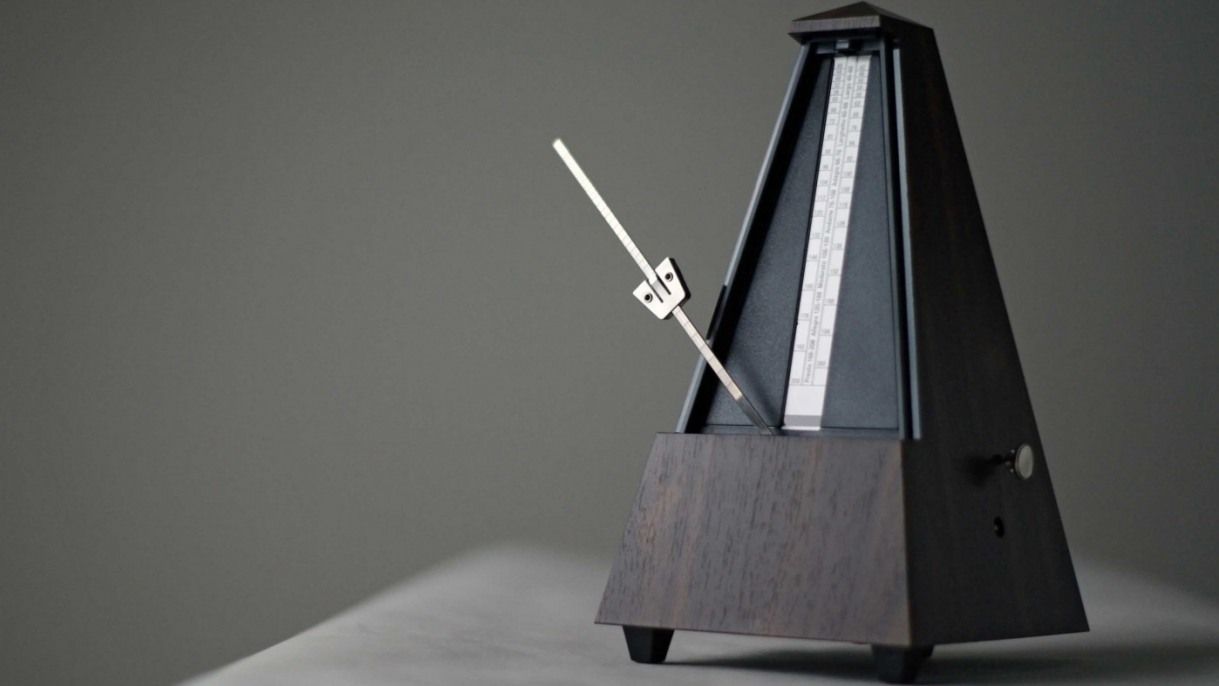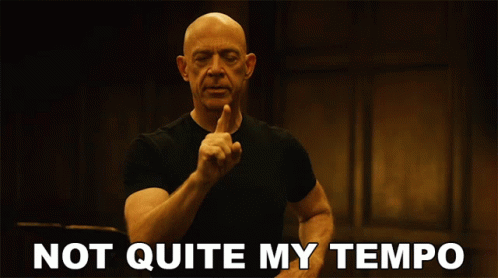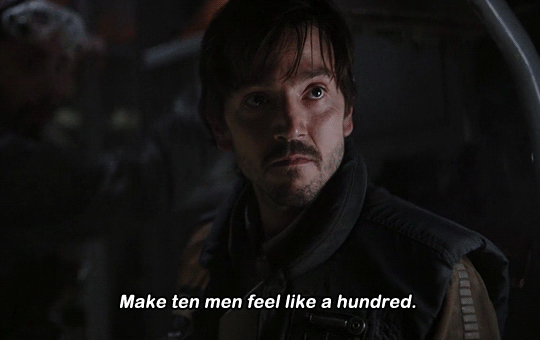Tempo, Tempo, Tempo. - Tactics Talk pt.1

In a traditional strategic or tactical sense, Tempo is the speed and intensity of our actions relative to the speed and intensity of unfolding events in the operational environment. Tempo can be measured for individual armies and players or the overall tempo of the table. Gaining the momentum to maintain your personal tempo within the game of Legion is something that is almost always vital to succeeding in a competitive environment. Your goal is to force your opponent to fight on their back foot and potentially make mistakes that you can capitalize on. This is readily achievable in a few different ways, let's talk about them.

Activation Rhthym
Legion is a game of limited turns which makes gaining momentum and maintaining tempo a little bit difficult at times. This is directly linked to one of the major ideas of this topic: Activation Count and Activation Power/Priority.
The generally accepted activation count for competitive Legion is and has been, around ten activations. Empire and Republic can get away with eight or nine and generally feel okay, but the fewer acts you have when compared to your opponent, the harder of a time you'll have gaining control of the tempo and board. It's not impossible for them to do by any means, but it takes a little more work. However, even though Imp/Gar armies tend to have lower activations, they usually have more durable units. With durability comes a little edge in board control. If the game starts with Imp/Gar at nine and their Reb/CIS opponent at eleven it's highly likely that by turn three the Imp/Gar will still be at nine while the Reb/CIS is now at eight or nine.
The main consideration to make when building lists with a high activation count is unit priority and power. A ten-act list with four heavy-hitting units will likely still have superior board control when compared to a thirteen-act list with one or two heavy hitters, but like all things, it depends. A common use of high activation lists is to "Last-First" a powerful or reliable unit. The idea of a last-first is that you go with your playmaker/power piece as the very last activation of a round and then very first the following round. While it may not feel like it, this essentially allows you to go with that unit twice in rapid succession as far as the board state is concerned. This can be extremely powerful with units like Force Users, Bounty Hunters, Pierce Heroes, and Built-up Corps or SF units.
T1:xxxxxxxxxA, T2:Axxxxxxxxx, T3:xxxxxxxxxA, T4:Axxxxxxxxx, T5:xxxxxxxxxA, T6:Axxxxxxxxx
Xs denote your less timing-reliant pieces while A denotes your Playmaker. This can sometimes be difficult to achieve if your opponent sees your plan. You need to get orders on that piece every turn to pull this off as effectively as possible, but it can also be achieved in a smaller sense by only doing it over the span of two turns. I.e. T3: xxxxA T4:Axxxx. Losing middle activations does not affect this rhythm which can also be a huge plus.
Consider Han Solo, whom I like to think of as the king of last-firsts. On any given activation Han is capable of removing up to four wounds from the table. If you can last-first him you have the potential to rapidly and effectively remove eight wounds before your opponent can react. This can be huge for gaining momentum and maintaining tempo. This is also easier to pull off with Han because of his Command Card Sorry About the Mess, I will cover Command Cards in more depth later.
Last-firsts are not the only way to line up activations to your advantage. You can also try to set up a sort of right-hook-left-hook style rhythm. One where you have something like a unit of Shoretroopers(A), who have massive dice pools, go immediately followed by a mop like Boba or IG88(B) to clean up any remaining wounds. It would look something like this:
T1:xxxxxxxxAB, T2:ABxxxxxxxx, T3:xxxxxxxxAB, T4:ABxxxxxxxx, T5:xxxxxxxxAB, T6:ABxxxxxxxx
It can be combined with the idea of a list-first, but it's more timing-agnostic than that in general. It can happen anywhere in the order sequences and still be effective.

These examples can be played with and morphed into different things. If your opponent does something major and affects the activation rhythm sometimes it is more important to play reactively to maintain control.
One major component of maintaining activation rhythm is when you consider Firesupport. Firesupporting is essentially the act of using two activations in one. It's usually done in order to punch through a tougher target. It's a very interesting topic to me, because you have to give up some amount of momentum in order to firesupport. The exception to that is if you wipe out a unit that has not activated that turn, this means you essentially maintain activation current (dis)parity. I am not a clone player so I cannot attest to the true value of firesupporting in a competitive environment. However, I play rebels who have access to MK2s. I only even begin to consider firesupport with MK2s if I think there is a chance that I will kill my target. I do not think the value of losing that momentum is worth adding extra dice just to do marginally more damage all at once. I am very curious to hear what Clone players have to say about this though, so please let me know in the comments or message me!
Controlling the Engagement(s)
Simply put, if you are able to dictate the timing, location, and size of engagements in a game of Legion you are in control. This can be dictated by a few different things, but the most likely one is the Objective. Legion is a game that is won and lost in the objectives. The objectives that you bring in your battle deck are the very first way to begin controlling engagements and the overall tempo of a game. For example, if you are bringing a lot of short-ranged or melee units you want to bring Payload, Intercept, and maybe Breakthrough. Through these objectives, you are able to control the location of the engagements in your favor. In order to win your opponent has to try and score the objectives. If they do it means they will be closing the gap for you and your short-range units.
Another way of dictating the terms of engagement is via the positions of your Playmakers and Power Pieces. These are units that your opponent can not ignore and thus have to come after. Now, this doesn't mean running them to the far corner of the board and hoping your opponent will chase you. It means positioning them in such a way that they can threaten a weaker flank, an important objective, or an area of the table. There is almost always a position where you can put a Playmaker unit where your opponent will have to divert part of their army from the main objective to deal with them.
The Violence of Action is a major way to dictate the tempo of an engagement and a game. The Violence of action means the unrestricted use of speed, strength, surprise, and aggression to achieve total dominance against your enemy. If you are the first person to shoot, it ideally means you will also be the last one standing. If you can wipe an activation or two off of the board early on in the main engagement of the game you can gain significant control and momentum. This does not mean you need to be shooting and killing in the very first turn, it just means you want to be the first one to do it. That could happen on turn three or even turn five for a slow game. Basically, Hit First and Hit Hard.

You do need a few things to pull this off as effectively as possible and those are Mobility, Strength, and Durability.
Mobility means you want fast units, Ideally with Relentless, Steady, or Charge to spearhead your initial attacks. You want to surprise your opponent with action and catch them off-beat. This is more difficult to do in Legion because the location of units is not a secret and almost all information that you have, your opponent does too. Mobility is also crucial for getting out and away from the fight whenever you may need to.
Strength means you want your spearheading units to be an actual threat. Running a fast but offensively weak unit into the fight first thing is not generally that scary since they can't usually delete a unit off the bat.
Durability means after the smoke clears from your initial attacks, you need to be able to live through any retaliatory attacks. Legion is a dice game, it is not impossible (or very uncommon) to roll all blanks on a defensive roll and lose any momentum that unit gained for you. You need to consider more than just the defensive dice a unit rolls. If they have easy access to dodges, nimble, low profile, lots of wounds, or even a close-by Med-Bot. Of course, Red Saves on top of all of that is nice, but not always necessary.

Maintaining Tempo
Once you have gained momentum and have the tempo in your favor, you need to be able to maintain it. In general, I will mention the fact that maintaining tempo in your favor is pretty easy. In order to even begin to gain momentum in the fight you have to force your opponent on their back foot. If you get your opponent to a point where they're fighting from behind, it's usually pretty easy to maintain that.
One key element here is flexibility. Don't be too rigid in your play style. You need to be able to move between objectives and firing lanes in order to threaten any issues that may start to arise. You want to put your playmakers and powerpieces in places where they have plenty of options.

What you need to watch out for is your opponent finding ways to disrupt your tempo...
Disruption
Disruption is both a way to gain momentum and remove it. A few topics that I've already discussed can be considered disruptive depending on the scenario. The Violence of Action is inherently disruptive if you successfully catch your opponent off-guard.
Something that I see a lot of people do, including myself, is not have a target priority. Half-killing two units of Stormtroopers is generally worse than full-killing one. You want to focus down single units before shifting too much fire elsewhere. You only score points from entirely killed units, but the main way this helps you is by removing activations off the board. The greater the activation disparity, the easier it is to gain and maintain Tempo. The same can be said about the reverse as well. If your opponent has been dictating the tempo of the game, the easiest way for you to disrupt that in your favor is by killing off their activations (ideally before they activate) and shrinking activation disparity.
Another easy way to disrupt their momentum is by trapping them. If they move their army in such a way that they leave a flank open or unprotected you can then move to threaten that. Not allowing them to optimally position themselves for scoring or fighting. This can be hard to swing against competitive players though.
In Legion, there is very little secret information. This can make it difficult to surprise, disrupt, or play any sort of mind games. Luckily, there is one facet of Legion that is completely secret: Command Cards.
Command Cards are the single best way to disrupt your opponent's tempo. There are a few reasons why this is the case.

Activation Priority
Priority is one of the most important aspects of gaining and maintaining tempo against your opponents. Everyone who plays will understand the most basic aspect of priority. Whichever player has the fewest pips on their played command card goes first. Ties in pip value result in a random die roll to determine priority. As it stands, the only keyword that affects this is Cunning. If you want to go first, play a low pip card. If you want to go second, play a high pip card. If you're looking to Last-First, play a high pip followed by a low pip the next round.
If you know your opponent and/or the units that they're using well enough you can almost guarantee priority for four out of six turns in a game. This is easier said than done, but it is quite doable if you know what to look for. You can also use this to guarantee that they get priority should you want to.
I like to have a general idea of what order I am going to play my cards when I am list-building, but a lot of it can be very dependent on the game state. Even if you have a loose plan, don't be afraid to go against that in order to get what you need.
Card Effect
Almost every command card in the game has some sort of extra effect. Many effects are very good, but some are not. A few cards have specific effects that will always mess with your opponent's tempo. Cards like Change of Plans, Reckless Diversion, ISB Investigation, They too Will Suffer, any card that will re-shuffle a faceup order into a bag, etc. There are a lot of options here, way too many for me to discuss in major detail. I'm sure you get the idea.
Secrecy and Surprise
I talked about this a bit earlier but I'll quickly go over some of it again. Command Cards are some of the only secret information in this game. You can use this fact to surprise your opponent by doing something unpredictable. Sometimes, using command cards that are considered B-Tier can actually be really good at messing with your opponent's tempo. They may not see it coming, they may not know what the card does, and they may not have any idea how to counter it. You can also play cards at times when it seems like they'd be useless. Do this as a way to preserve the better cards in your hand or even just to get a specific order out on the table if you really need to. With that said, I would not really advocate throwing your best cards out just to try and mess with your opponent.

There's a lot more to all of these topics but I am nearing 2,500 words. I will be working on a second and maybe third article in this series soon. I don't believe that anything in this article is truly a hard and fast rule and I would love to hear your ideas on any of these things. You know where to find me, thanks for reading!
